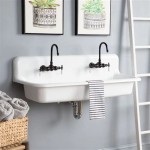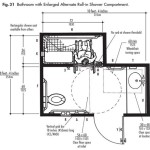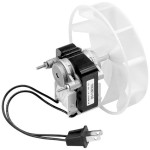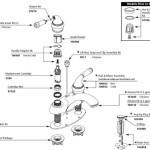Why Does Your Bathroom Sink Stink?
A persistent, unpleasant odor emanating from a bathroom sink is a common household problem. While it might be tempting to simply ignore it or mask it with air fresheners, understanding the underlying causes is crucial for effective and lasting solutions. The offensive smell is usually a sign of something amiss within the drainpipe system, indicating the buildup of organic matter, bacterial growth, or plumbing issues. Identifying the root cause is the first step in eliminating the stench and maintaining a clean and sanitary bathroom environment.
Odors from a bathroom sink can range from a musty, mildew-like smell to a foul, sewage-like scent. The intensity and specific characteristics of the smell can often provide clues to the source of the problem. For instance, a sulfurous or rotten egg smell can indicate the presence of sewer gases, while a moldy odor suggests the growth of mold or mildew. Neglecting these smells can lead to more serious problems, including clogged drains, pipe damage, and potential health hazards.
Regular maintenance and preventative measures can significantly reduce the likelihood of developing a smelly bathroom sink. This includes flushing the drain with hot water regularly, avoiding the disposal of grease or food particles down the drain, and periodically cleaning the drainpipe with appropriate cleaning solutions. Addressing the issue promptly when a smell is first detected is crucial to preventing the problem from escalating and requiring more extensive and costly repairs.
Biofilm Buildup: The Primary Culprit
One of the most common reasons for a smelly bathroom sink is the accumulation of biofilm within the drainpipe. Biofilm is a complex community of microorganisms, including bacteria, fungi, and other organic matter, that adhere to surfaces in moist environments. In the bathroom sink drain, biofilm forms from the accumulation of soap scum, hair, toothpaste, skin cells, and other debris that are washed down the drain on a daily basis. This organic material provides a food source for bacteria, fostering their growth and proliferation.
As the bacteria in the biofilm break down the organic matter, they release volatile organic compounds (VOCs), which are responsible for the unpleasant odors. These VOCs can include sulfur-containing compounds, such as hydrogen sulfide, which has a characteristic rotten egg smell. The biofilm itself can also trap and retain moisture, creating a favorable environment for the growth of mold and mildew, which further contributes to the overall odor.
The structure of the drainpipe, with its twists and turns, provides ample surface area for biofilm to accumulate. The P-trap, a U-shaped section of pipe designed to trap water and prevent sewer gases from entering the bathroom, is particularly susceptible to biofilm buildup. This is because the standing water in the P-trap creates a constant moist environment that encourages the growth of bacteria and the accumulation of debris.
The composition of the water itself can also influence the formation and composition of biofilm. Hard water, which contains high levels of minerals such as calcium and magnesium, can contribute to the formation of scale, which provides a rough surface for biofilm to adhere to. The pH of the water can also affect the growth of different types of bacteria and fungi, influencing the type and intensity of the odor produced.
Addressing biofilm buildup requires a multi-pronged approach. Simple flushing with hot water may not be sufficient to remove the biofilm completely. Using enzyme-based drain cleaners can help break down the organic matter and dislodge the biofilm from the pipe walls. Alternatively, a mixture of baking soda and vinegar can be used as a natural cleaning agent to help loosen and dissolve the buildup. In severe cases, it may be necessary to disassemble the drainpipe and physically scrub the interior surfaces to remove the biofilm.
Sewer Gas Leakage: A More Serious Issue
While biofilm buildup is a common cause of bathroom sink odors, a more serious problem is the leakage of sewer gases into the bathroom. Sewer gases are a complex mixture of gases produced by the decomposition of organic waste in the sewer system. These gases can include methane, hydrogen sulfide, ammonia, and other volatile compounds, many of which have strong and unpleasant odors.
The P-trap in the drainpipe is designed to prevent sewer gases from entering the bathroom by creating a water barrier that blocks the passage of gases. However, if the P-trap loses its water seal, sewer gases can escape into the bathroom. This can occur due to several reasons, including evaporation of the water in the P-trap, siphoning of the water due to negative pressure in the drainpipe, or a leak in the drainpipe itself.
Evaporation of the water in the P-trap is more likely to occur in infrequently used bathrooms, such as guest bathrooms or vacation homes. Over time, the water in the P-trap can slowly evaporate, leaving a gap that allows sewer gases to enter the bathroom. Siphoning can occur when a large volume of water is quickly drained from a nearby fixture, such as a toilet or washing machine. This can create a negative pressure in the drainpipe that sucks the water out of the P-trap.
Leaks in the drainpipe can also allow sewer gases to escape into the bathroom. Leaks can develop due to corrosion, damage, or loose connections. Cracks or holes in the drainpipe can allow sewer gases to seep out, causing a persistent odor. Loose connections between the drainpipe and the sink basin or between different sections of the drainpipe can also create gaps that allow sewer gases to escape.
Identifying a sewer gas leak can be challenging, as the odor may be intermittent or localized. A strong sulfurous or rotten egg smell is a common indicator of sewer gas leakage. Other signs include a gurgling sound from the drainpipe or slow draining of the sink. If a sewer gas leak is suspected, it is important to address the issue promptly, as prolonged exposure to sewer gases can be harmful to health.
Addressing a sewer gas leak typically requires the assistance of a qualified plumber. The plumber can inspect the drainpipe for leaks, check the P-trap for proper function, and identify any other potential sources of sewer gas leakage. Repairs may involve tightening loose connections, replacing damaged sections of the drainpipe, or installing a new P-trap. It is important to ensure that all repairs are performed correctly to prevent future sewer gas leaks.
Drainage Issues and Blockages: Contributing Factors
Problems with drainage can also contribute to a smelly bathroom sink. Slow draining or clogged drains can create stagnant water within the drainpipe, which fosters the growth of bacteria and the accumulation of organic matter. Blockages can be caused by a variety of materials, including hair, soap scum, grease, and small objects that accidentally fall down the drain.
When water is unable to drain properly, it can pool in the drainpipe, creating a breeding ground for bacteria and mold. The stagnant water also provides a medium for the decomposition of organic matter, releasing foul-smelling gases. Over time, the buildup of debris can further restrict the flow of water, exacerbating the problem.
In some cases, the blockage may be located in the P-trap, which is designed to trap debris and prevent it from entering the sewer system. If the P-trap becomes completely blocked, it can prevent water from draining altogether, leading to a severe odor problem. Other potential locations for blockages include the drainpipe leading from the P-trap to the main drain line and the vent pipe, which allows air to enter the drainpipe and prevent siphoning.
Addressing drainage issues and blockages requires removing the obstruction and restoring proper water flow. A plunger can be used to dislodge minor blockages in the P-trap. A drain snake or auger can be used to remove more stubborn blockages further down the drainpipe. Chemical drain cleaners can also be used to dissolve organic matter and clear blockages, but it is important to use them with caution, as they can be corrosive and damage the drainpipe.
Preventing drainage issues and blockages involves taking steps to minimize the amount of debris that enters the drainpipe. This includes using a drain strainer to catch hair and other solid materials, avoiding the disposal of grease or food particles down the drain, and flushing the drain with hot water regularly to help prevent the accumulation of soap scum. Periodic cleaning of the drainpipe with a baking soda and vinegar solution can also help prevent blockages from forming.
In conclusion, a smelly bathroom sink is usually attributable to a combination of factors involving biofilm buildup, potential sewer gas leaks, and problems with drainage or blockages. Addressing these issues effectively requires understanding the underlying causes and implementing preventative measures. Regular maintenance, proper cleaning, and prompt attention to drainage problems can significantly reduce the likelihood of developing a smelly bathroom sink and ensure a clean and sanitary bathroom environment.

Why Does My Bathroom Sink Stink Plumbing Authority Inc

How To Clean A Stinky Sink Drain Home Repair Tutor

Why Does My Bathroom Sink Smell How Do I Resolve It

Why Does My Bathroom Sink Stink Plumbing Authority Inc

Sink Smells Bad Remove Odor From Overflow Hole Clean With Eyme Cleaner

What Causes Bathroom Drains To Smell

What S That Stinky Smell In My Drain Odor Fix

Bathroom Sink Drains With A Bad Smell Causes Measures George

Why Does My Bathroom Sink Stink Plumbing Authority Inc

Sewer Odor As A Sign Of Issues What To Do When You Smell In Your House Nw







